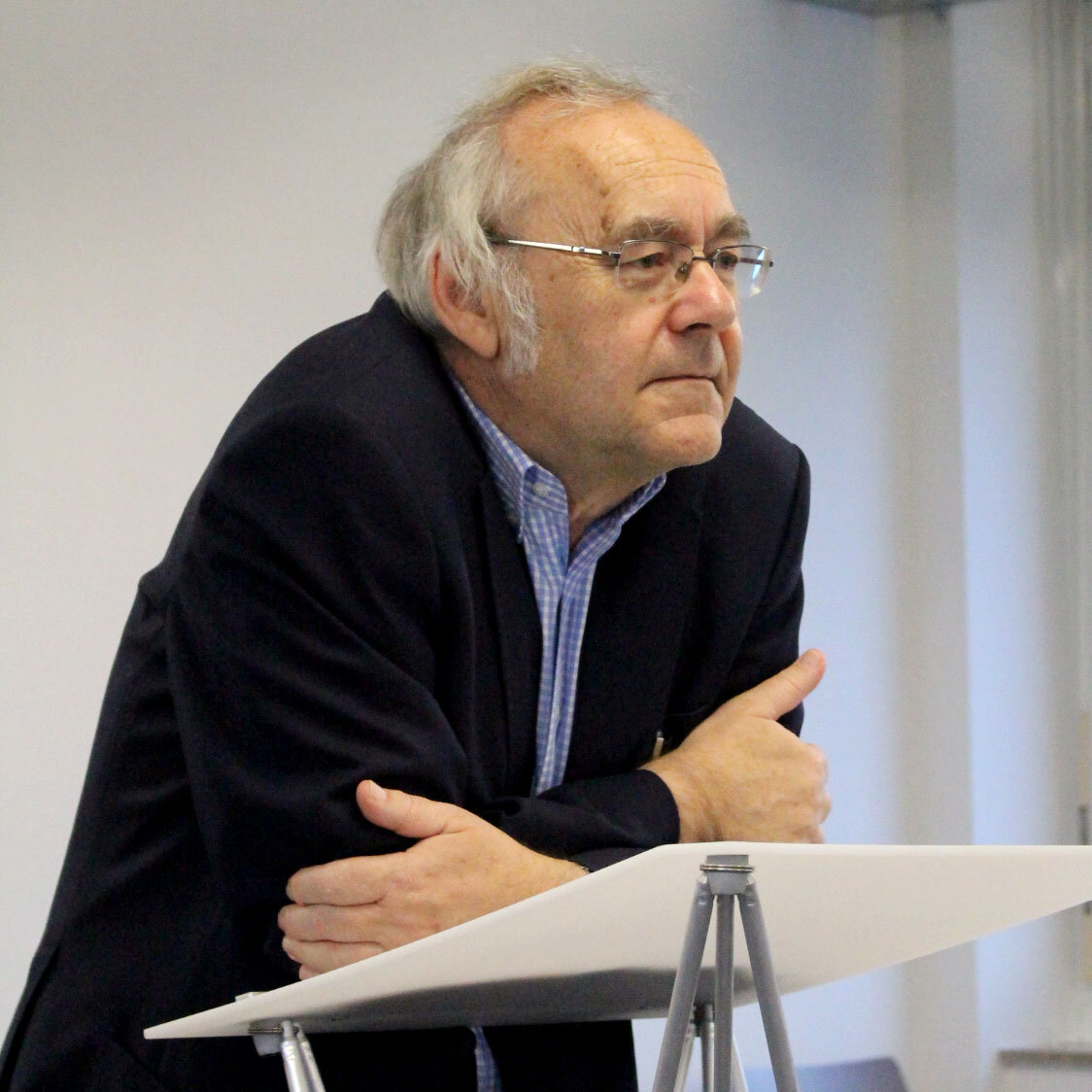APPENDIX 1:Talking About. A short manual for dualist argumentation.


1. Separate language and reality, description and object, statements and what they are about. Place them opposite each other. Make these dichotomic distinctions in advance of your discourses, so they can serve as presuppositions or even preconditions.
2. The dichotomies are universal and abstract. You don’t need to think about them all the time. It is enough if you tacitly presuppose them and actualize them only, when the discourse requires it.
3. Put the objects under the language, so you can talk about them.
The second side of the dichotomy (reality, world, object, object-language) lies underneath the first side (language, statement, description, meta-language). Refer the first side of the dichotomy to the second side: this ensures the relation between the two sides.
4. Determine the relation between the two sides: You can choose between various realist and idealist/constructivist positions, depending on which side of the dichotomy you grant cognitive priority.
Either: there are distinctions and therefore you make them. Or: you make distinctions and therefore they are.
5. You need to equip the objects with an identity against the descriptions. Then the objects are already prior to any description so, as they will be described in the best case, in the case of truth. You can determine this identity either absolute: against all discourses, or relative: to the conceptual framework, in which you argue.
Watch out: strong restrictions can get you accused of being a relativist.
6. The objects are invariable against the discourses in language. The discourses are variable: You can describe one and the same object in various ways, make different statements about the same object, etc.
Although the objects are as they are, independent of their descriptions, you get to know them only in the course of true descriptions – otherwise your discourses would be superfluous.
7. Set a goal: Truth and knowledge. The goal of your cognitive efforts is to acquire knowledge of reality via language. To reach this goal at least approximately, you must direct the discourse towards the second side of the dichotomy, that is, to the object of the discourse.
The direction of discourse toward the object of discourse is a central feature of the dualist argumentation technique.
Dualist discourse is truth-orientated and object-orientated.
The object of the discourse precedes the discourse: thus object-orientated discourse is directed backwards.
Ignore!
8. You have achieved your goal if you succeed in reaching a correspondence/agreement between the language-side and the object-side of the dichotomy.
How this correspondence/agreement can be determined, if it is to be reached at all, this is a matter of controversy within dualist argumentation.
Some say opinions (descriptions, sentences, statements) are true, if and when they agree with reality. Correspondence theories of truth belong here.
Others say opinions agree with reality because they are true – coherence and consensus theories of truth belong to this group.
In the first case the truth of what we say about the world is tested against the world. In the second case the truth of what we say is not established against the world but in talking about it. The agreement between language and world cannot be stated/established directly, but only via a detour of a qualified agreement between the participants of a discourse.
Which version you will opt for depends on which side of the dichotomy you give cognitive priority.
These questions are not unimportant, as the effectiveness of the dualist argumentation on other discourse-participants depends on whether they practice the same version or not.
9. The first side of the dichotomy is the withinof discourse, the second side is the beyondof discourse.
The beyond is presupposed in an abstract manner, but you can concretise it anytime. Such a concretisation is only possible with the help of opinions, which you hold yourself in the discourse.
A happy coincidence: thus the agreement of your opinions with the beyond of discourse is secured.
The beyond of discourse enables you to judge not only your own opinions, but also those of the other discourse-participants.
10. Transfer the opinions you hold to be true into the beyond of discourse. Then you can refer to them whenever you want to denote or present the beyond within the discourse.
This presentation is only possible as far as your opinions reach.
The transfer of opinions into the second side of the dichotomy, into the beyond, carries no obligation: you can reverse it anytime in case your opinions change.
11. If you want to test the truth of your opinions, refer them to the beyond.
You will succeed. The beyond will not let you down. After all the beyond and its elements – objects, facts, simply what-you-talk-about – are abstract entities that can be filled with any arbitrary content.
Presenting the beyond by means of your own opinions (and which others should you choose?) will always result in a correspondence between your opinions and the beyond. You can even say that they are equivalent with each other.
12. You can bring any arbitrary opinion, as long as you hold it, into agreement with the beyond of discourse.
All you need to do is: double your own opinions into the beyond. Besides, the beyond and its elements are mute. They need a representative in the discourse, who speaks for them and who announces the judgements made in the beyond in the within.
This representative and advocate is nobody else but you. So indirectly, taking a detour via the beyond, you are your own judge. This has an advantage: the verdict will always be in your favour.
13. As long as the discourses run free of conflict, this judge, this referee, does not need to be activated. The success of your search for truth and knowledge is guaranteed, as long as you have confidence in it. Truth-claims do not have to be made explicit, their redemption is not discussed.
No plaintiff, no judge.
14. The situation becomes interesting when conflicts arise in the discourse, when contradicting opinions claim to be in agreement with the object in the beyond of discourse.
This is exactly the situation, where the dualist argumentation technique is supposed to prove itself.
15. The dualist argumentation should contribute in reaching a decision between competing opinions with the help of truth- and falsehood attributions.
Thanks to this argumentation it should be possible to reduce a potential plurality of opinions toward the one and true opinion, to transform dissent into a true consensus.
16. In a conflict-situation the task should be to check, to determine, whether the competing opinions (i.e. your opinion and the counter-opinion) agree or disagree with the (common) object of these opinions.
17. Proceed like this: differentiate the object to the extent, that it becomes epistemically decisive. The differentiation must suffice to state agreement or disagreement between the object and the opinions about it.
For this the common, consensual presentation/denotation of the object, that precedes the competing opinions in a conflict, is not sufficient.
To decide a conflict it is necessary to differentiate the object further than has been done through the presentation of the object prior to the competing opinions. You achieve this differentiation through presenting/denoting the object by means of your own opinion. So you need to extend the common object presentation/denotation by adding your opinions about the object.
18. Set the object which you have specified and differentiated as far as possible with the help of your own opinion, ahead of the competing opinions – namely your own opinion and any counter-opinions.
Refer the opposing opinions to the object thus presented in the discourse. This object reference will yield a disagreement between object and counter-opinion, whilst a reference of your opinion to the object will self-speaking result in agreement.
This ensures that only the counter-opinions fail when confronted with the beyond of discourse (with reality, with the object) and not your own opinion.
19. Always raise your truth-claims transsubjectively: they must transcend your own opinion. Otherwise their range is limited to your opinion and they only indicate that you hold the opinions which you hold as long as and as far as you hold them.
You can limit the scope to the discourse in which you argue or extend it to all possible discourses, but that depends on whether you want to argue regional or universal.
The transsubjective truth-claim allows to influence or even regulate discourse. Truth thus becomes a regulative idea.
20. Don’t be afraid of error. In situations of conflict the error always lies with the other and not with you: You can only state the error of the other from your own position (or from a third position you share).
Your own errors are always already over: You can only state them when you have separated from them, when you no longer commit them: And you do this from your present position of a, perhaps only temporary, non-error.
21. The transsubjectivity of truth-claims prevents the error of the other being merely the deviation from the opinion from which you raise the accusation of error: that is from your own opinion. Transsubjectivity establishes a truth and consensus orientation of discourses to the beyond, which you specify with the help of your own opinions.
22. Present the object with the help of your own opinion. This allows you to depersonalize, objectivize and universalize your own opinion.
Preferably use expressions like: “in reality”, “in truth”, “in fact”, “evidently”, “naturally” or “actually”; but phrases like “as we know today”, “as science has shown” or “from the standpoint of science” may also serve the purpose.
On the other hand you need to personalizethe counter-opinions whose non-correspondence with the object is a consequence of having the object presented by your own opinion. Your discourse partners “falsely believe”, “falsely claim”, “are mistaken in thinking”, “commit errors”, “hold the wrong opinion”, etc.
23. In the argument with your discourse-partners combine your own depersonalized opinion with the personalized counter-opinion.
A few simple examples:
“You only believe that this...is so and so, but in fact it is...”,
“You may well claim that ... but the truth is, ...”
or, in controversies in publications:
“Whilst N.N. claims, that ..., in reality it is...” or
“What N.N. is saying, does not take into account, that we know today, that ... is ..”
or “It is still held that... but the fact is...”
Often it may suffice to personalize the counter-opinion through quotation marks and thus distinguish it from your own depersonalized opinion. Indirect speech can also be useful..
24. Via the depersonalization you redeem the truth-claim for your own opinion. Your own opinion is depersonalized, so that it holds even if you personally don’t hold it, and even if nobody holds it.
Truth is impersonal and trans-subjective. Falsehood and error are only in our mind, but truth is in it and out of it. To make mistakes and to err is human, but truth is not only the work of humans.
25. Now there is a problem: often your partners and opponents in discourse will also master the dualist argumentation technique.
So you get into a stalemate.
However, as a truth-oriented thinker you cannot accept such a situation: If you presuppose your own beyond of discourseto all other discourse-participants bindingly, you must thereby also demand that they redeem your truth-claims.
Discourse power opens a way out of this stalemate: the power relations in speech-situations are often unevenly distributed. (In a dominance-free discourse no consensus would be reached.)
But rest assured, you will always win: either instantly, because authority is on your side: the authority of the educator, the teacher, the professor, the leading scientist, - or in the long run: because truth is on your side and will prevail in the end.
26. Don’t forget: You could be the other.
27. Don’t hesitate to admit your theory of truth and knowledge is refutable. As a refutation instance choose elements of your own theory. This way you cannot go wrong.
As a correspondence theorist say that the correspondence theory is false, if it does not correspond with reality.
If you are a critical rationalist then claim that even critical rationalism can fail when confronted with reality.
If you are a consensus theorist declare your theory false, if no rational, true consensus can be reached about it.
This way you have saved your particular theory in any case: any “refutation” would not affect the fundamental principle of your theory – the correspondence principle, the idea of theories failing when confronted with reality, the idea of a true consensus.
On the other hand, no one will expect you to state the refutation conditions for your theoretical beliefs using beliefs that you yourself do not have.
28. The application of dualist argumentation allows you to show any arbitrary opinion to be true, adequate or correct, as long and as far as you hold it. Andyou can eliminate or at least discredit all opinions that run counter to your own opinions as false or incorrect.
29. If you have learned these steps, try to forget them. Once you know how to apply them automatically in case of conflict, you have mastered the dualist argumentation. If these steps are internalized to such an extent that you no longer need to reflect on the argumentation while applying it – then your discourse is “rational” and you cannot do otherwise.
30. This is of course a crash course in dualist argumentation. You already learn the basic rules during your education, which is also an education for truth, that is: an education for the truth of the educators.
If you study philosophy, you have the opportunity to learn the latest refinements of this argumentation technique. Perhaps, if you make philosophy your profession, you can elaborate it even further and improve its efficiency.
Next: Appendix II: (Radical) Constructivism -- What difference does it make?
**************
Rhetorics wants to convince an audience of arbitrary opinions.
Dualist argumentation and philosophy wants to convince an audience (readers, listeners, opponents) of the truth.
This difference cannot be emphasized often enough ...

Josef Mitterer is an Austrian philosopher.
The Flight From Contingency 1 here
The Flight From Contingency 2 here
The Flight From Contingency 3 here
The Flight From Contingency 4 here